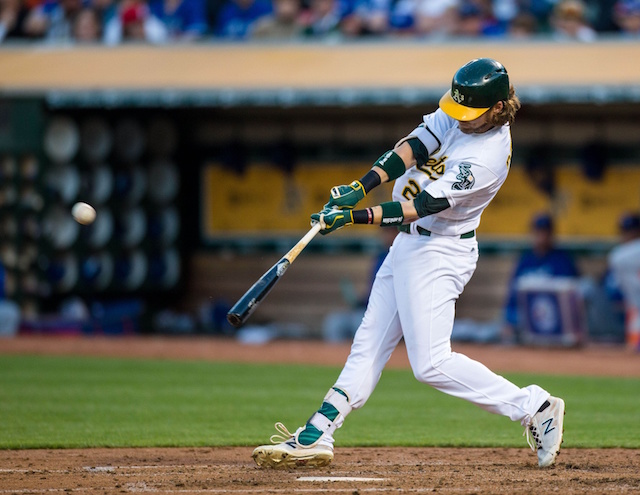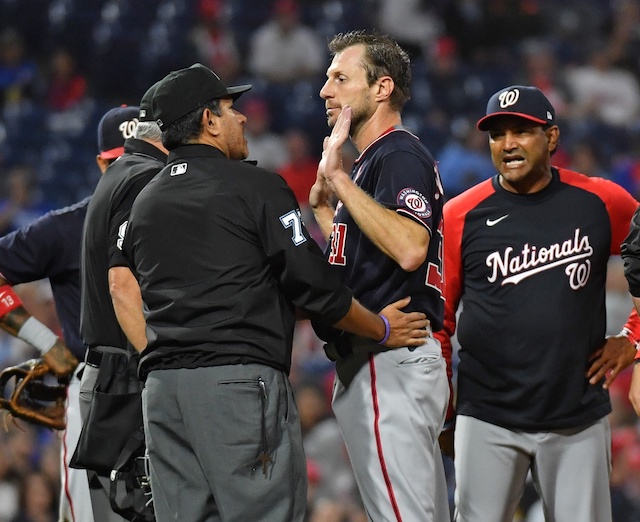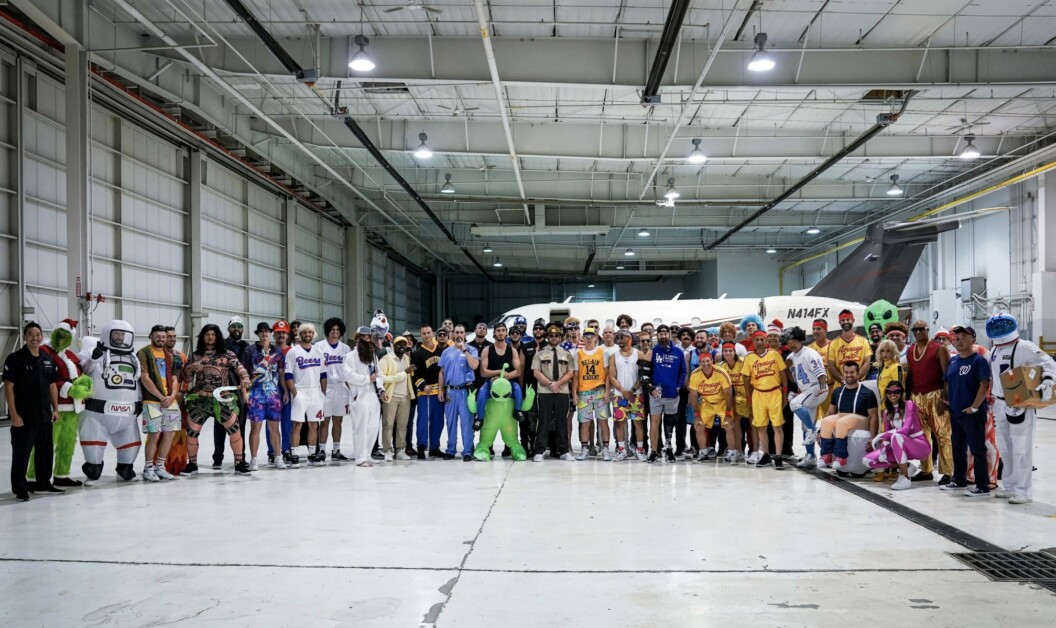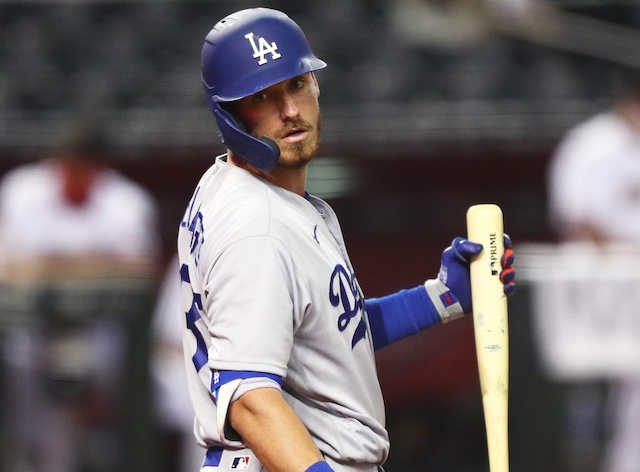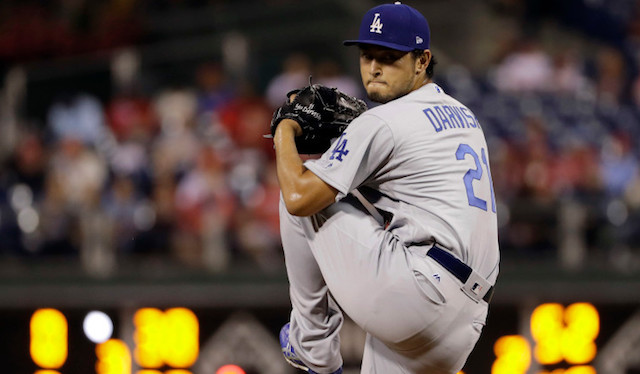The Los Angeles Dodgers’ first move on the final day non-waiver trades could be completed was to acquire Rich Hill and Josh Reddick from the Oakland Athletics. Oakland received pitching prospects Jharel Cotton, Grant Holmes and Frankie Montas in return.
Los Angeles potentially lost yet another starting pitcher on Sunday, as Bud Norris left his outing after throwing just 13 pitches, so acquiring another starter became more of a priority than it already had been.
With Andre Ethier’s 2016 return uncertain and Trayce Thompson’s production waning as the year wore on prior to his injury, Reddick provides some stability in the outfield.
Now, let’s take a closer look at what the Dodgers lost and gained as a whole.
Grant Holmes, RHP
The Dodgers’ first pick in the 2014 draft, Holmes cruised through his first two seasons with the organization, pitching well in rookie ball and Low-A. This season, he headed to the hitter-friendly California League and, while his stuff has been as good as advertised, the results have been somewhat mixed.
Holmes’ ERA has climbed over 4.00 this year and while his walk rate has slightly improved, his strikeouts have dipped. However, at just 20 years old, Holmes is one of the youngest players in the league and his stuff is still top notch.
Holmes has a pair of plus pitches in his fastball and breaking ball, as well as showing feel for a changeup, and the ability to mix in a two-seamer. Like most young pitchers, he needs to continue to develop his command and repeat his delivery.
The right-hander recently ranked as the No. 60 prospect in baseball according to Baseball America, and No. 82 according to MLB.com.
Frankie Montas, RHP
Montas was the biggest of the three prospects to come to the Dodgers in the three-team deal that sent Todd Frazier to the Chicago White Sox last winter.
Unfortunately, while Montas figured to fit into the team’s Major League plans this year, a pair of rib injuries have sidelined him for most of the season. When healthy, Montas has one of the best fastballs in the system, regularly sitting in the upper 90s and touching triple digits.
He adds in a slider that is a swing-and-miss offering when it’s on. He also throws a changeup that occasionally is average to a tick above. Like Holmes, Montas needs to do a better job of hitting his spots.
Some evaluators see his big fastball, hard slider and lack of command playing better out of the bullpen. However, Montas will likely continue to start until he proves he can’t. He was ranked by Baseball America as the No. 82 prospect in baseball in their midseason prospect list.
Jharel Cotton, RHP
Cotton has been one of the better stories from the Dodgers’ heralded 2012 draft class. Born in the Virgin Islands and selected in the 20th round, he quickly ascended the Minor League ladder and established himself as a top prospect.
Cotton’s fastball sits in the low 90s and touches the mid 90s, and he throws it from a high, three-quarters arm slot that mitigates his lack of prototypical height. Cotton’s changeup is his best pitch, thrown in the high 70s with tons of movement down and away from lefties.
He also features a breaking ball but it’s clearly his third pitch. Like Montas, Cotton has been thought of by some as a reliever long-term. The two-pitch mix, combined with a shorter 5’11 stature, work against his future in a rotation.
However, Cotton presumably will continue to work as a starter and only move to the bullpen if remaining in the rotation doesn’t pan out.
Rich Hill
Hill has taken the long road to becoming an ace, as the Boston-bred southpaw was drafted three times as an amateur before finally signing with the Chicago Cubs in 2002. Fast forward 14 years and now he’s one of the dominant pitchers in the game… When healthy.
Hill has already missed time this season with a groin strain, and more recently due to a blister on the middle finger of his throwing hand. So let’s talk about when he is healthy.
Late last season he joined the Red Sox rotation for four starts and absolutely dominated, allowing just five runs while striking out 36 batters in 29 innings. This season, Hill has made 14 starts for the A’s and gone 76 innings, with 90 strikeouts and a 2.25 ERA.
His fastball sits around 91 mph but gets swings and misses because of its spin rate. Hill’s curveball also has an excellent spin rate and is regarded as one of the better breaking balls in the league.
If, and it’s a big if, Hill remains healthy down the stretch, he gives the Dodgers one of the better starters in the league. If he gets another blister, re-tweaks the groin, or suffers some other injury, it would be an unfortunate but wholly predictable outcome. Hill will be a free agent after this season.
Josh Reddick
Reddick has also missed time this season, though through no real fault of his own. His thumb caught on Starlin Castro’s spikes as he attempted a stolen base and forced Reddick to miss six weeks with a fracture.
Now healthy, he’s been productive and is seemingly focused on being more than just a power hitter. After slugging 32 home runs in 2012, Reddick, has cooled off in the power department. He hit 12 homers in both 2013 and 2014, though he played just 114 and 109 games in those seasons.
Last season Reddick 20 homers with a .781 on-base plus slugging percentage in 149 games. This year, while he’s only hit eight home runs in 68 games, his slugging percentage is the same as it was in 2015, and he’s now posting his highest wRC+ of his career (121).
While Reddick had been regarded as a very good defensive outfielder earlier in his career, he’s now considered about-average but still owns a very strong arm.
Another right-handed hitting outfielder could have been useful, but the return of Kiké Hernandez from the disabled list, as well as Scott Van Slyke’s renewed success against lefties makes the Reddick acquisition more palatable.
Like Hill, Reddick is also a free agent at year’s end, but he’s only 29 years old and could come back if Ethier’s future remains murky.
So, was the trade worth it? Well, we’ve seen some pretty hefty packages for relievers, so getting one of the top starters in baseball and a good outfielder for three good arms doesn’t seem like an overpay, especially since that’s seen as the strength of the Dodgers’ farm system.
It’s also noteworthy that I’ve heard reliever profiles on each of the pitchers the Dodgers traded; yes, even Holmes. Hill has question marks, but those are what make him affordable and keep the likes of Cody Bellinger, Jose De Leon, Julio Urias and Alex Verdugo off the table.
Reddick’s acquisition has the added benefit of allowing Howie Kendrick to move back to second base. The Dodgers are trying to contend this year and are, as of right now, not giving up their best prospects to do so. That’s a difficult proposition to argue against.



